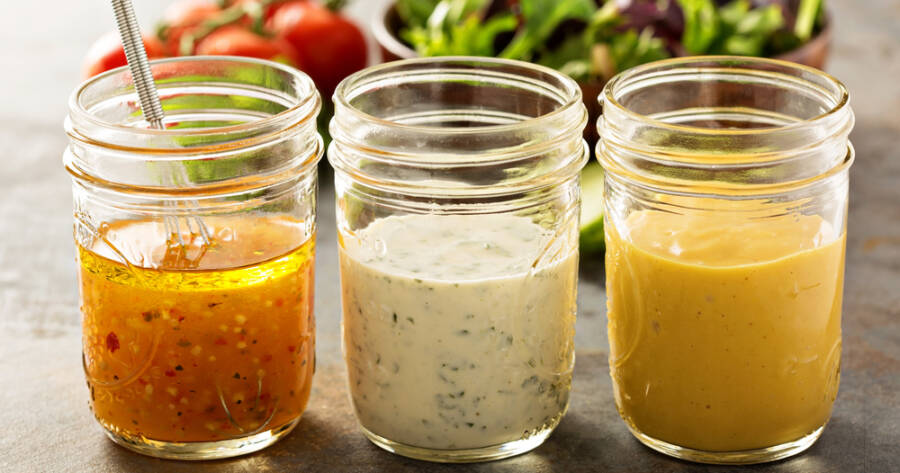If you’re trying to eat more salads but find yourself dousing them in store-bought dressing to make them bearable, you’re not alone. While those bottled options are convenient, they often come loaded with added sugar, excess sodium, and preservatives that can dull the natural freshness of your greens. The good news? Making your own salad dressings from scratch is surprisingly simple—and once you try it, you may never go back.
With just a few basic ingredients and a little experimentation, you can create flavorful, wholesome dressings that elevate your salads and support your health. Here’s how to get started.
The Basic Formula: Oil + Acid + Flavor
Almost every vinaigrette-style dressing follows a simple template:
-
1 part acid (like vinegar or citrus juice)
-
3 parts oil (typically olive oil, avocado oil, or another neutral oil)
-
Add-ins for flavor (like mustard, honey, garlic, herbs, or spices)
Shake it up in a jar or whisk it in a bowl, and you’ve got a fresh, tasty dressing in under a minute. You can adjust the ratio for a tangier or milder result depending on your preference.
Once you’ve mastered the base, you can start mixing in different ingredients to build unique flavor profiles—and tailor them to whatever salad you’re making.
Popular Homemade Dressing Ideas
Here are a few easy recipes you can whip up anytime. Each makes enough for 2–4 servings and can be scaled up or stored in the fridge for a few days.
1. Classic Balsamic Vinaigrette
-
3 tablespoons olive oil
-
1 tablespoon balsamic vinegar
-
1 teaspoon Dijon mustard
-
1 teaspoon honey or maple syrup
-
Salt and pepper to taste
Great on mixed greens, roasted veggie salads, or pasta salads.
2. Creamy Greek Yogurt Ranch
-
1/4 cup plain Greek yogurt
-
1 tablespoon olive oil
-
1 teaspoon lemon juice or white vinegar
-
1/2 teaspoon garlic powder
-
1/2 teaspoon onion powder
-
1 tablespoon chopped fresh herbs (dill, parsley, or chives)
-
Salt and pepper to taste
Perfect for dipping or drizzling on hearty salads with chicken or veggies.
3. Tangy Lemon Herb Dressing
-
2 tablespoons olive oil
-
2 tablespoons lemon juice
-
1 teaspoon honey
-
1/2 teaspoon Dijon mustard
-
1 clove garlic, finely minced
-
Chopped fresh basil, parsley, or thyme
Bright and zesty—ideal for grain bowls or Mediterranean-inspired salads.
4. Spicy Asian-Inspired Dressing
-
2 tablespoons rice vinegar
-
1 tablespoon soy sauce or tamari
-
1 tablespoon sesame oil
-
1 teaspoon honey or agave
-
1/2 teaspoon grated ginger
-
Optional: red pepper flakes or Sriracha for heat
Pairs well with cabbage slaw, noodle salads, or tofu-based bowls.
These are just starting points—you can tweak ingredients to suit your tastes or dietary needs.
Benefits of Making Your Own Dressings
Besides being tastier, homemade salad dressings offer a range of benefits:
-
Healthier ingredients: You control what goes in—no mystery additives or excessive sugar.
-
Customizable: Adjust flavors, textures, and ingredients based on your preferences or what’s in your fridge.
-
Cost-effective: Most dressings cost just pennies per serving to make.
-
Freshness: Homemade options taste brighter and fresher than many store-bought varieties.
You can also batch-make dressings and store them in mason jars for grab-and-go convenience throughout the week.
Pro Tips for Better Homemade Dressings
-
Emulsify: To keep oil and vinegar from separating too quickly, use mustard, honey, or egg yolk as natural emulsifiers.
-
Taste and adjust: Always sample your dressing before serving. Add more acid for tang, sweetener to mellow it out, or a pinch of salt to enhance flavors.
-
Store it right: Most vinaigrettes will keep in the fridge for 5–7 days. Creamy or yogurt-based dressings should be used within 3–4 days.
-
Shake before use: Natural separation happens—just give the jar a quick shake to blend it back together.
Elevate Your Salad Game
Once you start making your own dressings, you’ll find that salads go from something you eat because you should to something you genuinely look forward to. With just a few pantry staples, you can whip up a delicious dressing that brings your bowl to life—and do it in less time than it takes to read a label at the grocery store. Fresh, flavorful, and made your way—that’s the power of homemade.

